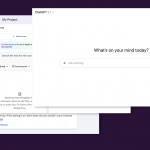
In 2021 data protection is no longer an option. Companies can’t ignore mitigating the risk of targeted or accidental data leaks or hope they won’t suffer a data breach.
The number of cyberattacks is increasing every year, and with the rising tide of regulations, data protection has become a mandatory part of every company’s security strategy. In the last years, data breaches have compromised the private data of hundreds of millions of users, the biggest security incidents involving companies such as Capital One or Zynga.
Data breaches can be disastrous in themselves, and they are often followed by hefty fines, brand damage and loss of customer trust. Data protection by design and default is at the core of many new regulations, including the EU’s GDPR and Brazil’s LGPD. Under them, companies can be fined not only for data breaches but also for failing to respect the new rights granted to data subjects under them. Consumer data, including Personally Identifiable Information (PII), is a key target for cybercriminals, but safeguarding intellectual property (IP) is gaining greater emphasis too.
Organizations are increasingly aware of the importance of data privacy and have started investing in data security strategies that aim to protect data and keep intruders out. Cybersecurity represents an asset, and that’s why companies should make the most of what it has to offer.
Let’s check what can businesses do to ensure their sensitive data is protected:
Improve employee awareness
The human element remains one of the biggest security threats across industries as human error and negligence can produce disastrous and expensive consequences.
Security awareness training should be mandatory and continuous for all organizations to mitigate these risks. Training can provide the knowledge necessary to make smart decisions and use appropriate caution when handling sensitive data. Companies should also keep in mind that cybersecurity is everyone’s responsibility and it includes all levels of employees up to the C-suite, as well as part-time employees, seasonal workers and interns. Everyone in the enterprise with access to a computer must be trained on cybersecurity best practices and, ideally, it should start at the onboarding of the person.
Encrypt sensitive files
Encryption is considered one of the most powerful and useful tools in the data security arsenal: vital to secure data both from malicious outsiders and careless employees. Furthermore, it is an effective step towards compliance with data protection regulations, and it can be used to protect both data at rest and in motion.
Organizations should consider encrypting sensitive files, including PII, as well as legally or medically sensitive data, thus ensuring that only authorized persons can access them and see their contents. This is important in terms of controlling and managing data within the company and protecting confidential files in case of an outside attack.
Companies should also ensure that all devices leaving the workplace are encrypted; thus if a device is lost, stolen or forgotten, the data on them is useless to anyone who tries to access it without a decryption key.
Conduct regular risk assessments
Risk assessment is an essential part of a cybersecurity strategy as it can identify vulnerabilities in the network, insufficiencies in employee education, inadequacies in the security posture of business partners etc. For this, organizations must have a well-defined methodology that ensures that they evaluate risks consistently.
By identifying potential threats and evaluating risk periodically, organizations can prevent security incidents, thus saving money in the long run.
Deploy a DLP solution
Data Loss Prevention (DLP) solutions are growing in popularity as organizations are looking for ways to reduce the risks related to sensitive data – including loss, theft and misuse. With a DLP solution, like Endpoint Protector, companies can discover and monitor confidential information, including PII and IP, as well as prevent unauthorized disclosure of sensitive data by creating and enforcing disclosure policies.
Achieving compliance with different data protection regulations also becomes easier with a data loss prevention solution.
Be proactive
In this decade, organizations should switch from a reactive approach to threats to a proactive one, as it is always better to prevent a breach than to recover from one. Blocking potential threats is also more economical, safer and faster. A proactive approach means that the enterprise tries to detect potential threats before an incident occurs. It includes robust security policies and security measures to protect sensitive data.
Data protection is paramount now, and security standards and expectations will keep evolving in this decade. With the increasing number of data protection regulations and rising awareness of consumers, companies can no longer neglect the need for efficient data security strategies.
Download our free ebook on
Data Loss Prevention Best Practices
Helping IT Managers, IT Administrators and data security staff understand the concept and purpose of DLP and how to easily implement it.
















